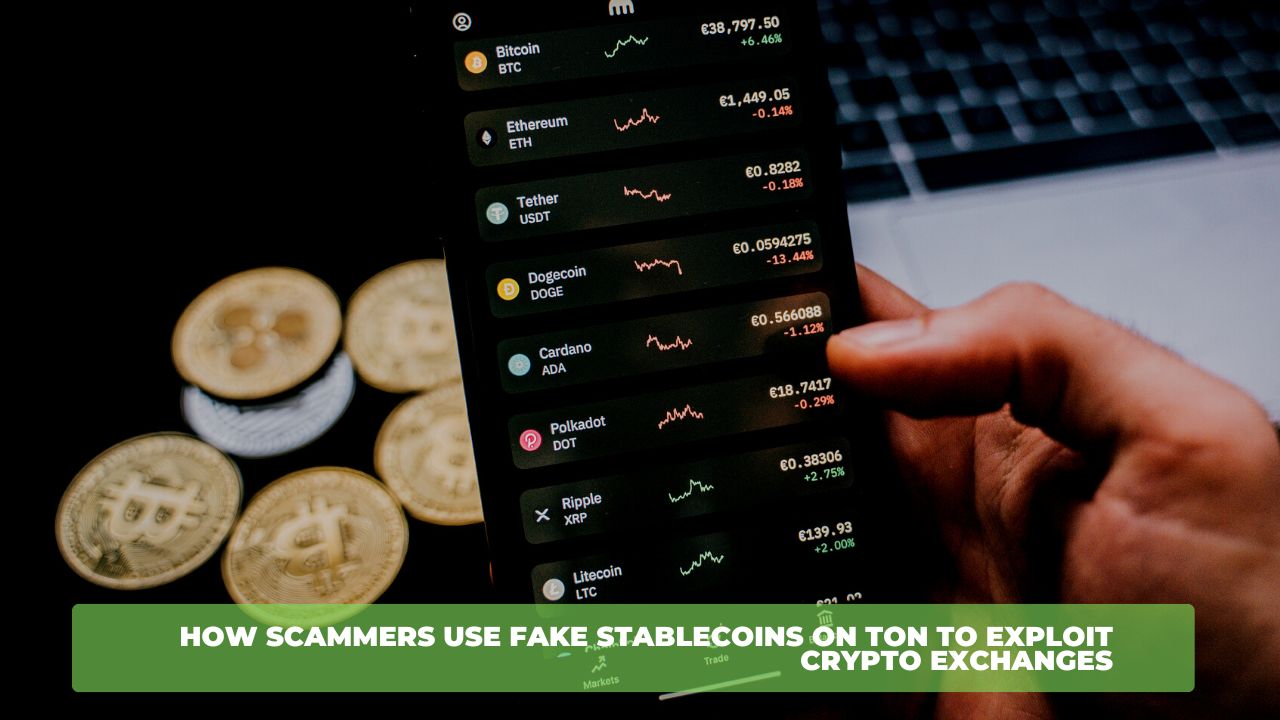In the quickly developing universe of digital money, con artists ceaselessly devise new strategies to take advantage of clueless casualties. One of the most recent plans includes the utilization of phony stablecoins on the TON (Open Organization) blockchain to target crypto trades. This blog entry dives into the complexities of this trick, how it works, and how traders and clients might safeguard themselves.
Understanding stablecoins and their appeal
Stablecoins are cryptocurrencies that are designed to keep their value constant by being backed by a reserve asset like gold or the US dollar. Their soundness makes them appealing for exchanging reserve funds and as a vehicle of trade in the unstable crypto market. However, they are also a prime target for con artists due to their stability.
The Scam: How Fake Stablecoins Operate on TON
Creation of Fake Stablecoins: On the TON blockchain, con artists fabricate counterfeit stablecoins. These phony coins are intended to mirror authentic stablecoins, with comparative names, images, and implied stakes in government-issued types of money or resources.
Infiltration of Crypto Exchanges: The tricksters then work to get these phony stablecoins recorded on different crypto trades. To deceive exchange operators, they might use fake documentation, make convincing websites, and use social engineering techniques.
Market Manipulation: Once the fake stablecoins are listed, the con artists use price manipulation to control the market. This creates a deception of authenticity and solidity, drawing in clueless brokers.
Exploitation of Traders: The fake stablecoins are purchased and traded by unsuspecting traders who believe they are genuine. The con artists make money by selling a lot of fake coins at high prices and then disappearing with the money.
Collapse and Aftermath: Ultimately, reality with regards to the phony stablecoins becomes known. The worth of the fake coins plunges, leaving merchants with useless resources and trades confronting critical reputational and monetary harm.
Real-World Examples and Impact
While explicit occasions on TON are as yet arising, comparative tricks have happened on other blockchains, causing significant misfortunes. The anonymity and decentralized nature of blockchain technology can make it challenging to locate and apprehend the criminals, which can make the harm even worse.
Protecting against Fake Stablecoin Scams
Due Diligence by Exchanges: Before listing new stablecoins, crypto exchanges must conduct thorough due diligence. This includes confirming the authenticity of the stablecoin guarantor, looking at their stores, and guaranteeing compliance with administrative principles.
Enhanced Security Measures: Trades ought to carry out powerful safety efforts, for example, multifaceted confirmation, high-level extortion location calculations, and standard security reviews to distinguish and forestall fake exercises.
Awareness and instruction: Dealers and financial backers ought to be instructed about the dangers of phony stablecoins and how to recognize expected tricks. This includes looking into brand-new stablecoins, looking for audits that have been verified, and staying away from deals that seem too good to be true.
Regulatory Compliance: Working closely with regulatory bodies can help ensure that the market only accepts legitimate stablecoins. An additional layer of security can be added by regulations, which provide a framework for verifying and monitoring stablecoin issuers.
Community Vigilance: The crypto community needs to keep an eye out for suspicious behavior and report it. Scams can be identified and stopped before they cause widespread harm through collaborative efforts.
Conclusion
The TON blockchain’s discovery of counterfeit stablecoins serves as a stark reminder of the need for constant caution in the cryptocurrency industry. By understanding how these tricks work and going to proactive lengths, the two trades and brokers can shield themselves from succumbing to such underhanded plans. As the crypto market keeps on developing, remaining educated and mindful will be vital to shielding computerized resources and maintaining trust in the environment.
